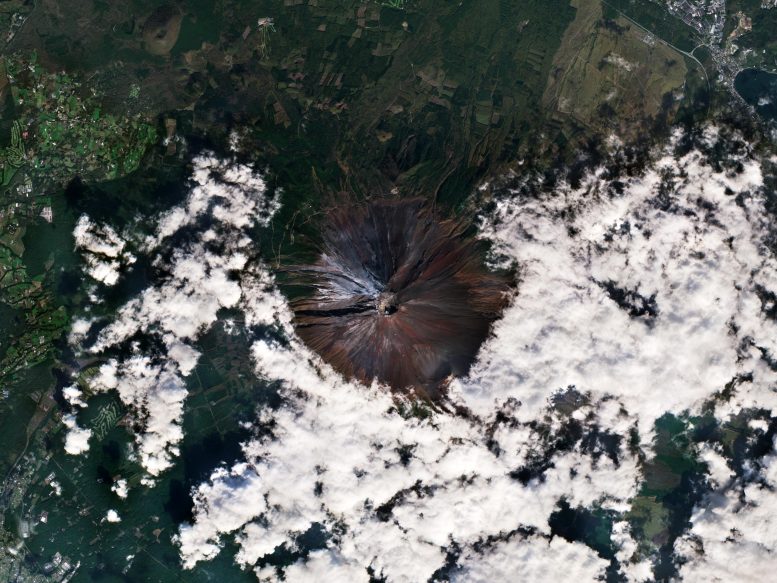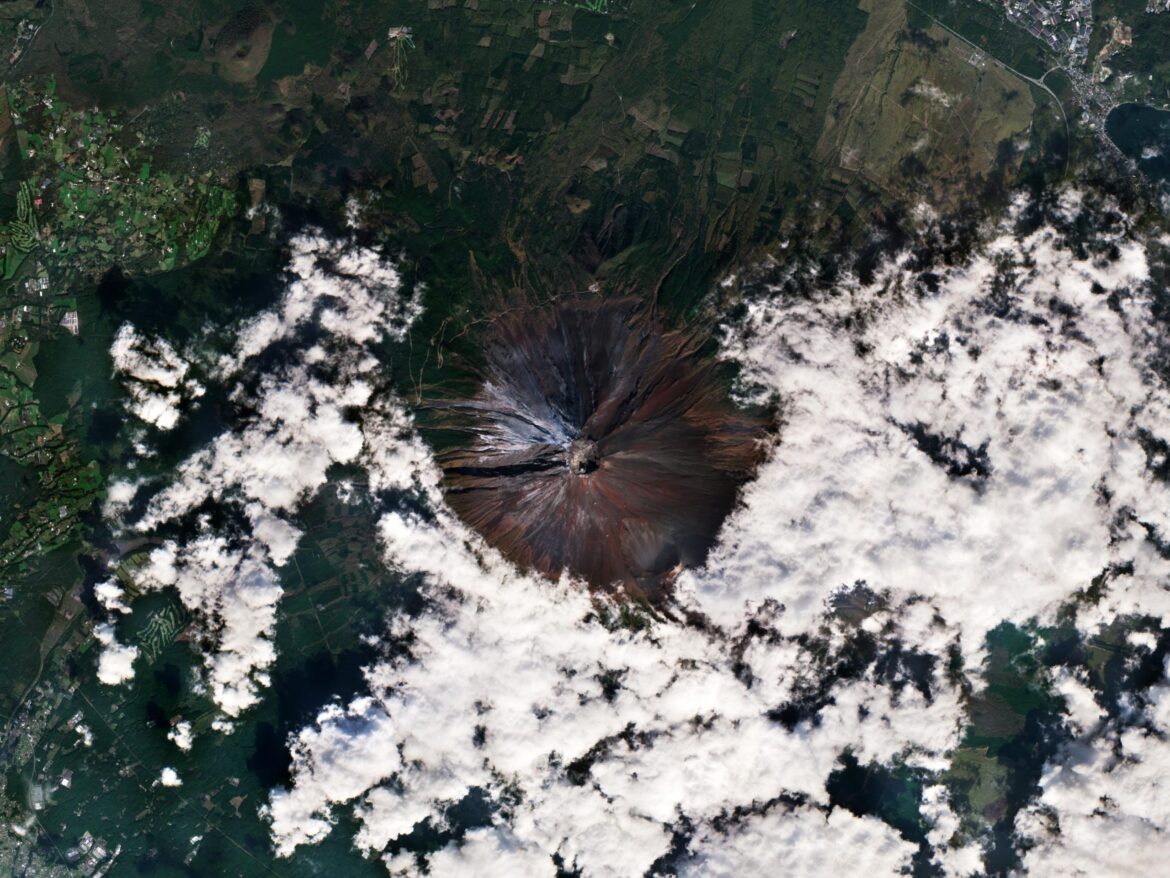 After one of the longest snowless periods in its recorded history, Japan’s Mount Fuji finally received snow, captured by the Sentinel-2 mission’s advanced imaging technology. Credit: Contains modified Copernicus Sentinel data (2024), processed by ESA
After one of the longest snowless periods in its recorded history, Japan’s Mount Fuji finally received snow, captured by the Sentinel-2 mission’s advanced imaging technology. Credit: Contains modified Copernicus Sentinel data (2024), processed by ESA
Mount Fuji, Japan’s tallest mountain, recently experienced its first snowfall after one of the longest snowless stretches in over 130 years of record-keeping.
On November 7, the Copernicus Sentinel-2 mission captured a striking image of the mountain’s iconic snowcap, just one day after the Japan Meteorological Agency’s Shizuoka branch confirmed the first sighting of snow.
The Sentinel-2 satellite is equipped with a high-resolution multispectral imager that captures optical images across a range of wavelengths, from visible light to the shortwave-infrared spectrum.
The data collected by Sentinel-2 support diverse applications, including precision agriculture, water quality assessment, and natural disaster response efforts.
 Mount Fuji, Japan’s tallest peak, rises majestically to 3,776 meters (12,389 feet) on Honshu Island. Known for its near-perfect symmetry, this active stratovolcano is a cherished cultural and spiritual icon. Revered in Shinto and Buddhist traditions, Mount Fuji has inspired centuries of art and literature and continues to draw millions of visitors, from climbers to sightseers.
Mount Fuji, Japan’s tallest peak, rises majestically to 3,776 meters (12,389 feet) on Honshu Island. Known for its near-perfect symmetry, this active stratovolcano is a cherished cultural and spiritual icon. Revered in Shinto and Buddhist traditions, Mount Fuji has inspired centuries of art and literature and continues to draw millions of visitors, from climbers to sightseers.
Mount Fuji, an active stratovolcano standing at 3,776 meters (12,389 feet), is Japan’s highest mountain and a geological marvel. Situated on Honshu Island, it last erupted in 1707, scattering ash across Tokyo. The mountain’s symmetrical shape, formed over millennia of volcanic activity, is instantly recognizable and symbolizes Japan’s natural beauty.
Designated a UNESCO World Heritage Site in 2013, Mount Fuji also serves as a focal point for scientific studies on seismic activity and environmental change, while maintaining its status as a sacred site and a cultural emblem.


AloJapan.com